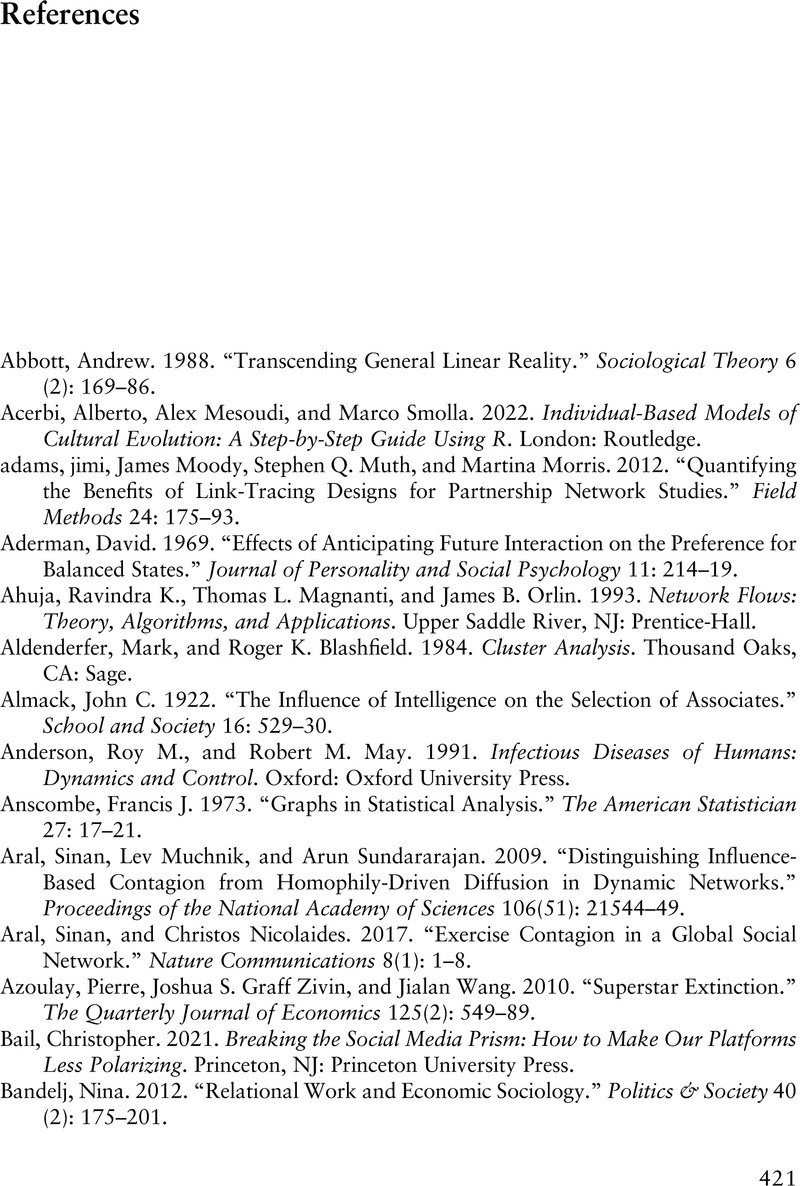References
Published online by Cambridge University Press: 21 September 2023
Summary

- Type
- Chapter
- Information
- Network AnalysisIntegrating Social Network Theory, Method, and Application with R, pp. 421 - 446Publisher: Cambridge University PressPrint publication year: 2023

